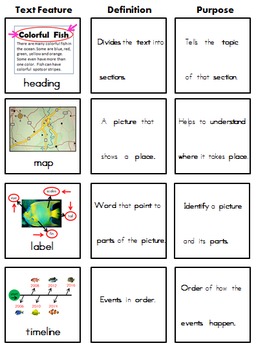Features
- To access and use all the features of Apple Card, you must add Apple Card to Wallet on an iPhone or iPad with iOS or iPadOS 13.2 or later. Update to the latest version of iOS or iPadOS by going to Settings General Software Update. Tap Download and Install. Available for qualifying applicants in the United States.
- Adjust facial features. Get the perfect shot every time by automatically opening closed eyes, turning frowns upside down, and more! Picture editing made easy. Easily whiten teeth, make skies blue, remove haze, reduce camera shake, and fix tilted photos. Plus, correct tone with a tool that remembers your favorite looks.

Synonym study for feature 1. Feature, characteristic, peculiarity refer to a distinctive trait of an individual or of a class. Feature suggests an outstanding or marked property that attracts attention: Complete harmony was a feature.
- General features
- Form and function
- Classification
Our editors will review what you’ve submitted and determine whether to revise the article.
Join Britannica's Publishing Partner Program and our community of experts to gain a global audience for your work!
Arthropod, (phylum Arthropoda), any member of the phylum Arthropoda, the largest phylum in the animal kingdom, which includes such familiar forms as lobsters, crabs, spiders, mites, insects, centipedes, and millipedes. About 84 percent of all known species of animals are members of this phylum. Arthropods are represented in every habitat on Earth and show a great variety of adaptations. Several types live in aquatic environments, and others reside in terrestrial ones; some groups are even adapted for flight.
The distinguishing feature of arthropods is the presence of a jointed skeletal covering composed of chitin (a complex sugar) bound to protein. This nonliving exoskeleton is secreted by the underlying epidermis (which corresponds to the skin of other animals). Arthropods lack locomotory cilia, even in the larval stages, probably because of the presence of the exoskeleton. The body is usually segmented, and the segments bear paired jointed appendages, from which the name arthropod (“jointed feet”) is derived. About one million arthropod species have been described, of which most are insects. This number, however, may be only a fraction of the total. Based on the number of undescribed species collected from the treetops of tropical forests, zoologists have estimated the total number of insect species alone to be as high as 5.5 million. The more than 48,000 described species of mites may also represent only a fraction of the existing number.
Features Meaning
The phylum Arthropoda is commonly divided into four subphyla of extant forms: Chelicerata (arachnids), Crustacea (crustaceans), Hexapoda (insects and springtails), and Myriapoda (millipedes and centipedes). Some zoologists believe that arthropods possessing only single-branched appendages, particularly the insects, centipedes, and millipedes, evolved from a separate ancestor and therefore group them within a separate phylum—the Uniramia, or Atelocerata; however, in this treatment these forms are dispersed among several subphyla. In addition, the phylum Arthropoda contains the extinct subphylum Trilobitomorpha. This group is made up of the trilobites, the dominant arthropods in the early Paleozoic seas (541.0 million to 251.9 million years ago). Trilobites became extinct during the Permian Period (298.9 million to 251.9 million years ago) at the end of the Paleozoic Era.
The myriapods (centipedes, symphylans, millipedes, and pauropods) live beneath stones and logs and in leaf mold; insects are found in all types of terrestrial habitats and some have invaded fresh water. The sea has remained the domain of the crustaceans, however, and only at its very edges are insects (subphylum Hexapoda) found.
The subphylum Crustacea contains mostly marine arthropods, though many of its members, such as the crayfish, have invaded fresh water, and one group, the pill bugs (sow bugs), has become terrestrial, living beneath stones and logs and in leaf mold. In the sea, large crustaceans such as crabs and shrimps are common bottom-dwelling arthropods. Many minute species of crustaceans (particularly the copepods) are an important component of the zooplankton (floating or weakly swimming animals) and serve as food for other invertebrates, fishes, and even whales.
Most members of the subphylum Chelicerata belong to the class Arachnida, containing the spiders, scorpions, ticks, and mites. They are largely terrestrial arthropods, living beneath stones and logs, in leaf mold, and in vegetation, but there are some aquatic mites that live in fresh water and in the sea. There are also many parasitic mites. Two small classes of chelicerates, the Merostomata, containing the horseshoe crabs, and the Pycnogonida, containing the sea spiders, are entirely marine. The merostomes are an ancient group and probably gave rise to the arachnids. Indeed, the earliest known fossil scorpions were aquatic.
This article discusses the arthropods as a group. For specific information on the most significant subphyla and classes of arthropods, seecrustacean; arachnid; insect. See alsomyriapod.
- related topics
Also found in: Thesaurus, Idioms, Encyclopedia, Wikipedia.
fea·tured
(fē′chərd)adj.
Features Definition
featured
adjfea•tured
(ˈfi tʃərd)
adj.
| Adj. | 1. | featured - made a feature or highlight; given prominence; 'a featured actor'; 'a featured item at the sale' conspicuous - obvious to the eye or mind; 'a tower conspicuous at a great distance'; 'wore conspicuous neckties'; 'made herself conspicuous by her exhibitionistic preening' |
| 2. | featured - having facial features as specified; usually used in combination; 'a grim-featured man' faced - having a face or facing especially of a specified kind or number; often used in combination; 'a neatly faced terrace' |
Features
featured
Want to thank TFD for its existence? Tell a friend about us, add a link to this page, or visit the webmaster's page for free fun content.
Link to this page:
